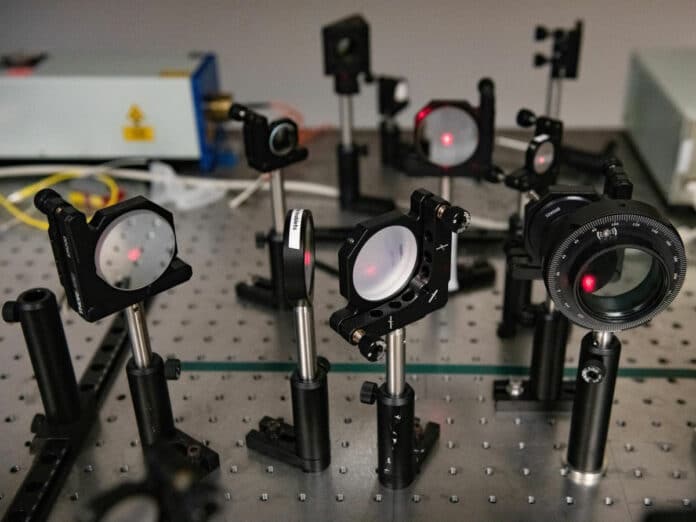
By Ashwini Sakharkar 10 Jul, 2024
Collected at: https://www.techexplorist.com/lasers-could-help-solve-worlds-plastic-problem/86073/
A team of researchers from around the world, headed by Texas Engineers, has devised a method for using a laser to disintegrate the molecules in plastics and other substances into their smallest components for potential reuse.
This innovative approach involves placing the materials on two-dimensional transition metal dichalcogenides and subjecting them to laser treatment. The implications of this discovery could revolutionize our approach to plastic disposal, particularly for materials that are currently challenging to break down using existing technologies.
“By harnessing these unique reactions, we can explore new pathways for transforming environmental pollutants into valuable, reusable chemicals, contributing to the development of a more sustainable and circular economy,” said Yuebing Zheng, professor in the Cockrell School of Engineering’s Walker Department of Mechanical Engineering and one of the leaders on the project. “This discovery has significant implications for addressing environmental challenges and advancing the field of green chemistry.”
Plastic pollution is a grave global crisis, with millions of tons of plastic waste ending up in landfills and oceans annually. The conventional methods of plastic degradation are inefficient, environmentally harmful, and energy-intensive.
The recent discovery by a team of researchers from the University of California, Berkeley, Tohoku University in Japan, Lawrence Berkeley National Laboratory, Baylor University, and Pennsylvania State University could pave the way for the development of efficient plastic recycling technologies to combat pollution.

Through the use of low-power light, the researchers were able to break the chemical bonds of the plastics and form new chemical bonds, creating luminescent carbon dots. These carbon-based nanomaterials have the potential to serve as memory storage devices in next-generation computer devices, making them highly sought after for their diverse capabilities.
“It’s exciting to potentially take plastic that on its own may never break down and turn it into something useful for many different industries,” said Jingang Li, a postdoctoral student at the University of California, Berkeley, who started the research at UT.
The groundbreaking C-H activation reaction allows for the selective transformation of carbon-hydrogen bonds in organic molecules, paving the way for the creation of new chemical bonds. This research utilized two-dimensional materials to catalyze the reaction, resulting in the conversion of hydrogen molecules into gas and the formation of carbon molecule bonds to create information-storing dots.
Further advancements and scaling of the light-driven C-H activation process are necessary for industrial applications. Nevertheless, this study marks a significant stride toward sustainable solutions for managing plastic waste.
The light-driven C-H activation process demonstrated in this study has the potential to be applied to various long-chain organic compounds, including widely used materials such as polyethylene and surfactants in nanomaterial systems.
Various institutions, including the National Institutes of Health, the National Science Foundation, the Japan Society for the Promotion of Science, the Hirose Foundation, and the National Natural Science Foundation of China, have contributed funding to this research.
Journal reference:
- Jingang Li, Di Zhang, Zhongyuan Guo, Zhihan Chen, Xi Jiang, Jonathan M. Larson, Haoyue Zhu, Tianyi Zhang, Yuqian Gu, Brian W. Blankenship, Min Chen, Zilong Wu, Suichu Huang, Robert Kostecki, Andrew M. Minor, Costas P. Grigoropoulos, Deji Akinwande, Mauricio Terrones, Joan M. Redwing, Hao Li & Yuebing Zheng. Light-driven C–H activation mediated by 2D transition metal dichalcogenides. Nature Communications, 2024; DOI: 10.1038/s41467-024-49783-z

Leave a Reply